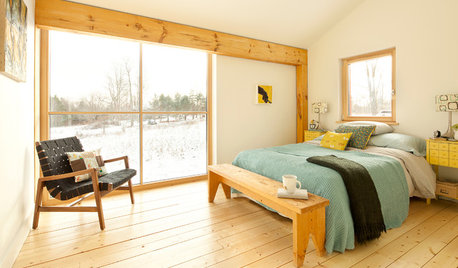Never had an azalea before...I think it's sick.
crega
15 years ago
Related Stories

ARTSee the Sky as Never Before, Courtesy of Artist James Turrell
Experience light, space and perception in a whole new way at three museums across the United States — and maybe at your house, too
Full Story
LIFE8 Sick-Day Activities to Get Healthy at Home
Staying home is the fastest way to heal — and to enjoy all the comforts and design details you've spent so much time choosing
Full Story
LIFEYou Said It: ‘I Knew This Home Had to Be Mine’ and More Quotables
Design advice, inspiration and observations that struck a chord this week
Full Story
LIFEYou Said It: ‘They Looked at Me Like I Had 10 Heads’
Design advice, inspiration and observations that struck a chord
Full Story
LIFE10 Feel-Better Things to Do on a Sick Day at Home
Nourish, pamper and heal yourself when a cold keeps you housebound, with these restorative ideas
Full Story
BATHROOM COLOR6 Bathroom Color Schemes That Will Never Look Dated
If you’d love to splash some color around your bathroom but fear it won’t stand the test of time, stick with these fail-safe combos
Full Story
PETSSo You're Thinking About Getting a Dog
Prepare yourself for the realities of training, cost and the impact that lovable pooch might have on your house
Full Story
GARDENING GUIDESNew Ways to Think About All That Mulch in the Garden
Before you go making a mountain out of a mulch hill, learn the facts about what your plants and soil really want
Full Story
CONTAINER GARDENSPatio-Perfect Berry Bushes Like You’ve Never Seen
Small enough for pots but offering abundant fruit, these remarkable bred berries are a boon for gardeners short on space
Full Story
LIFEStop the Toy Takeover by Changing the Way You Think
Make over your approach and get gift givers onboard with your decluttering efforts by providing meaningful toy alternatives
Full Story





rhodyman
cregaOriginal Author
Related Professionals
Waunakee Landscape Architects & Landscape Designers · Paradise Landscape Architects & Landscape Designers · Avocado Heights Landscape Contractors · Bedford Heights Landscape Contractors · Dallas Landscape Contractors · Dixon Landscape Contractors · East Hanover Landscape Contractors · Federal Way Landscape Contractors · Fort Atkinson Landscape Contractors · Midland Landscape Contractors · Munster Landscape Contractors · Post Falls Landscape Contractors · St. Louis Landscape Contractors · Webster Groves Landscape Contractors · Sun Valley Landscape Contractorsrhodyman
jeffyt
rhodyman